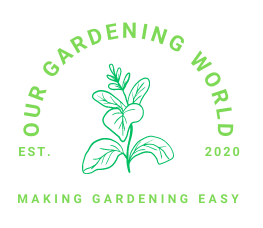Hey there, fellow green thumbs! Have you ever wondered how you could make your garden even more vibrant and beautiful without much fuss? Today, I will share my top 9 best garden hacks that’ll turn you into a backyard wizard in no time.
These are tricks of the trade you won’t find in your typical gardening guide. But wait! There’s more! Stick around till the end, and I promise to answer some burning questions that every gardener has. Get ready to revolutionize your garden; it’s time to get growing!
1. Epsom Salt: The Green Thumb’s Secret Weapon
Like many gardening enthusiasts, I’m willing to bet that you have a bag of Epsom salt sitting in your home, probably tucked away in your bathroom cabinet. But have you ever thought of using it in your garden? Surprise! Your beloved plants could greatly benefit from a good sprinkling of this common household item.
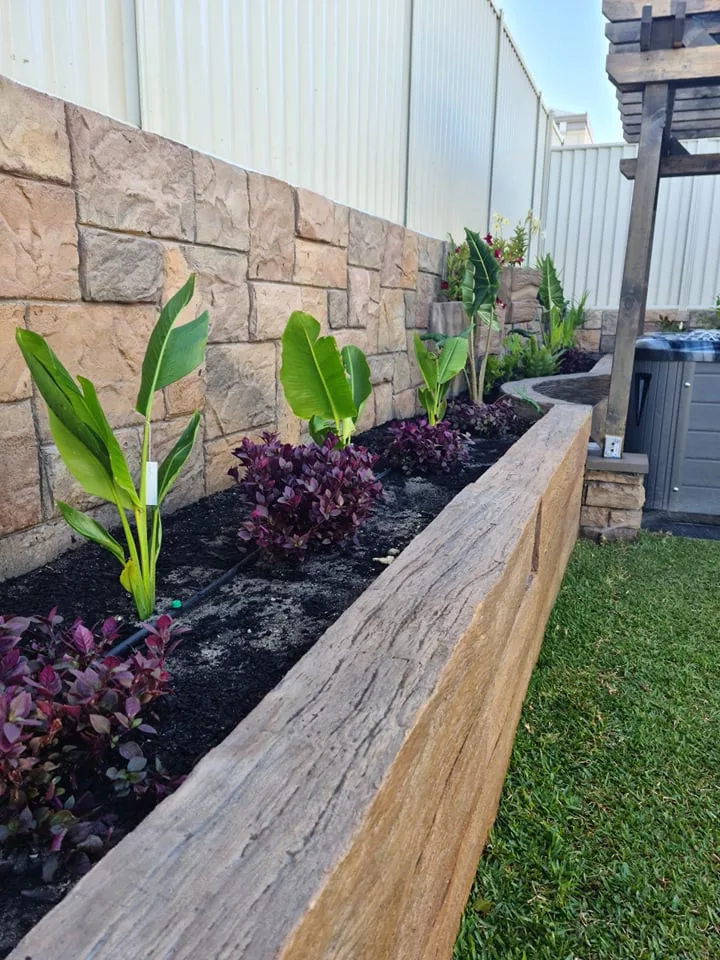
Epsom salt isn’t your ordinary salt. It’s a natural mineral compound composed of magnesium and sulfate, two vital nutrients that are crucial for plant health. These nutrients aid in seed germination, chlorophyll production, and the formation of flowers and fruits.
Here’s how you can put this garden hack to work: Sprinkle a tablespoon of Epsom salt around the base of your plants, or dissolve it in water and use it to drench the soil and foliage every couple of weeks. It’s an easy, inexpensive way to boost your plants’ nutrition.
The result? You’ll be amazed as your garden comes alive. Your plants will grow bigger and stronger, and you’ll see a significant improvement in flower blooming. The vibrancy of your plants’ colors will intensify, with their leaves becoming greener and more lush. Plus, many gardeners have found that Epsom salt helps their plants grow bushier and fuller, adding an extra touch of beauty and lushness to your garden.
But Epsom salt’s magic doesn’t end there. It can also help deter garden pests like slugs and beetles. These critters aren’t too fond of the taste of Epsom salt, making it a natural, non-toxic deterrent.
So why not give it a try? Incorporating Epsom salt into your gardening routine could be the game-changer you’ve been looking for. Because who wouldn’t want their garden to be the envy of the neighborhood, brimming with lush, vibrant plants that scream health and vitality? Happy gardening!
2. Eggshells: The Gardener’s Hidden Treasure
Let’s journey into your kitchen for our next garden hack. In your bin, a goldmine could be waiting to be discovered – eggshells! Yes, you heard that right. Those humble eggshells you’ve been discarding after making your morning omelette could be the secret to your garden’s next level of success. So, let’s roll up our sleeves, save those shells, and put them to good use!
Eggshells are packed with a treasure trove of nutrients, but one stands out above the rest – calcium. This nutrient plays a critical role in maintaining the health and vigor of your plants. It strengthens their cellular structure, leading to robust, hearty plants that can stand up to weather, disease, and pests. Calcium also plays a pivotal role in enabling plants to absorb nutrients more efficiently.
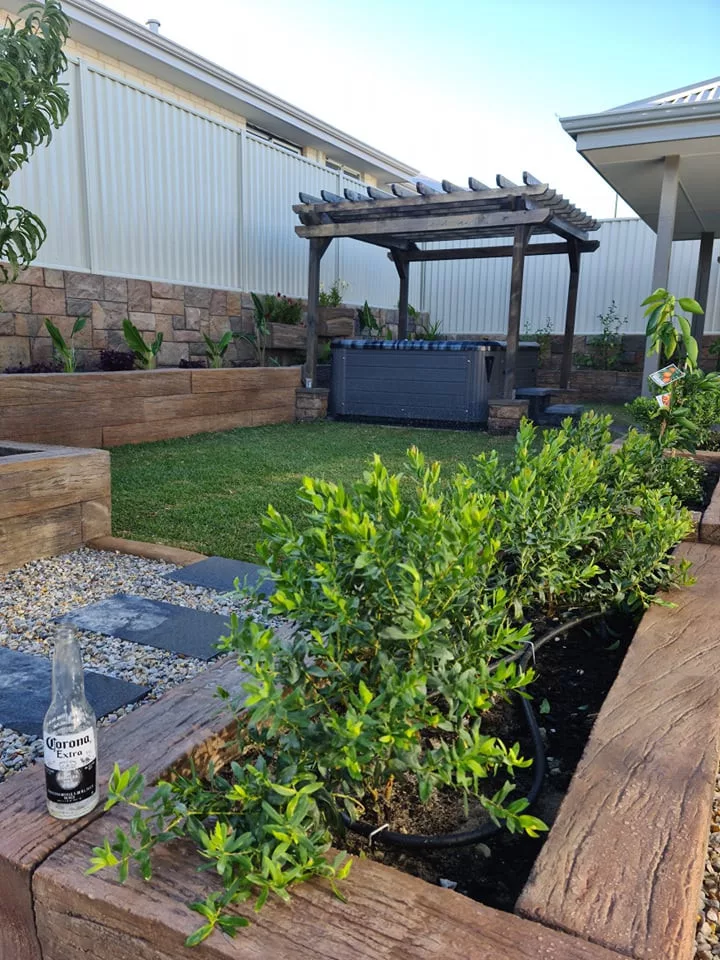
Moreover, calcium is especially vital for preventing a common condition known as blossom end rot, which is prevalent in tomatoes and peppers. This disease manifests as dark, sunken spots at the fruit’s bottom and is often a result of calcium deficiency. Enriching your soil with eggshells provides a steady supply of calcium to help ward off this disease, ensuring a healthy, bountiful harvest.
Utilizing eggshells in your garden is a breeze. After using the eggs, rinse the shells and let them dry. Once dry, grind them into a fine powder. This powder can be mixed directly into your soil or your compost pile if you have one. Over time, as the eggshells break down, they enrich the soil with calcium, benefiting your plants.
But the perks of using eggshells continue beyond nourishment. They also serve as a brilliant, non-toxic pest deterrent. Slugs and snails, common culprits of garden damage, aren’t fans of crossing sharp, jagged surfaces. Sprinkling crushed eggshells around your plants forms a natural barrier these pests won’t cross. It’s a simple, eco-friendly way to protect your precious plants.
In a nutshell, incorporating eggshells into your gardening routine is a win-win. Not only do you boost your garden’s health in a natural, cost-effective way, but you also get to recycle kitchen waste, contributing to a more sustainable lifestyle. So, the next time you crack open an egg, remember you’re also cracking open new possibilities for your garden!
3. Companion Planting: The BFFs in Your Garden
Did you know that your garden can have its very own social network? Similar to the social dynamics in human relationships, some plants play better with certain neighbors. This age-old gardening principle, known as companion planting, is not only fascinating but can also be a secret weapon for your garden’s health and productivity.
Companion planting is the strategic placement of different plant species in close proximity so that they can mutually benefit from each other. These benefits can include enhanced growth, natural pest control, disease prevention, and maximizing the use of space – elements that can propel your garden toward success.
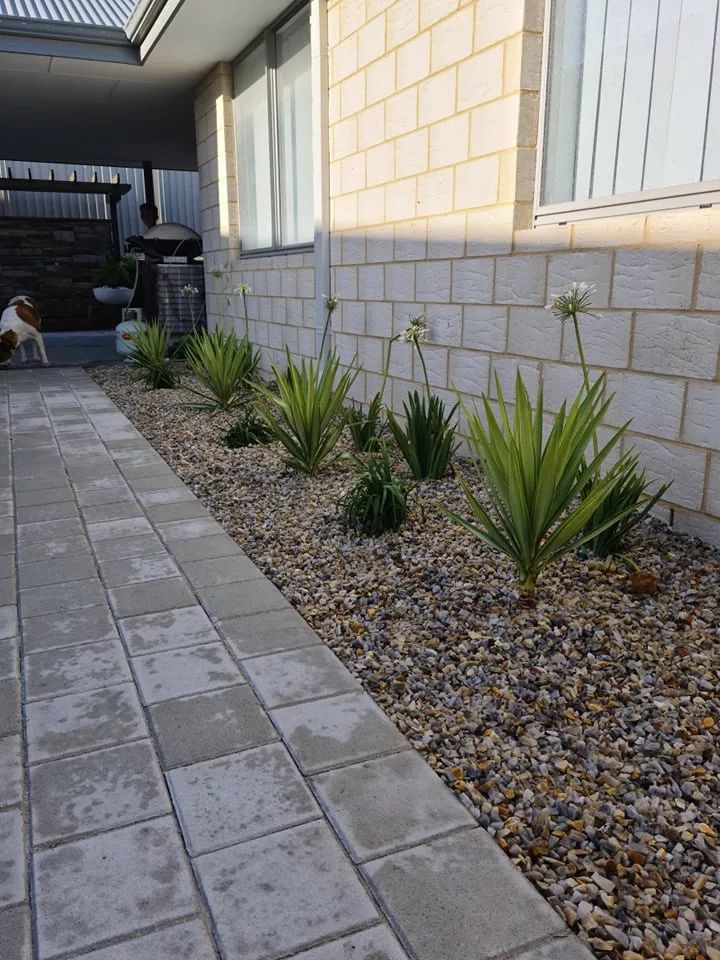
Take the relationship between basil and tomatoes, for instance. These two are like best friends in the plant world, each offering unique benefits to the other. Basil is a natural repellent against flies and mosquitoes, reducing the need for chemical pesticides and promoting a healthier garden ecosystem. Additionally, basil exudes a robust aroma that can enhance your tomatoes’ flavor!
On the other hand, tomatoes provide basil with a bit of shade. This sheltering effect is ideal for basil as it prefers cooler soil, helping it to thrive alongside its sun-loving companion. When planted together, these two grow better and taste better. It’s a beautiful friendship that results in a win-win for both your garden and your palate!
To get started with companion planting, begin by observing and experimenting. The relationships between plants can vary, and it’s always exciting to discover what works best in your specific garden environment. Try different combinations and see how they affect growth, pest control, and yield. With some trial and error, you’ll soon find the perfect pairs that result in a thriving, harmonious garden.
Beyond its practical benefits, companion planting also offers a lesson in harmony and mutual support, reminding us that we, like plants, thrive best when we support and complement one another. So, ready to play matchmaker in your garden? Give companion planting a shot, and witness your garden transform into a bustling, vibrant community of plants that grow better together!
4. Mulch Magic: Unveiling the Unsung Hero of Gardening
When it comes to gardening, some things are just not as glamorous as others, yet they play a pivotal role in making your garden flourish. Let’s talk about one such unsung hero: mulch. While it might seem like just a decorative layer, mulch is a garden superstar that offers a multitude of benefits. It’s like the support crew that works diligently behind the scenes, ensuring your garden’s leading stars – the plants – shine brightly.
At its essence, mulch is a layer of material applied to the soil’s surface. Common types include organic mulches like wood chips, straw, or compost, but you can also use inorganic mulches like stones or landscape fabric. Each type has its own benefits, and choosing the right one depends on your gardening needs and aesthetics.
One of the standout benefits of mulch is its ability to retain soil moisture. Imagine it’s a hot, blazing summer day. Without mulch, the soil around your plants can quickly lose moisture, leaving your plants thirsty and stressed. But with a layer of mulch, the soil’s moisture is preserved, ensuring your plants stay hydrated and happy, even in the scorching heat.
Mulch also comes to the rescue in your battle against weeds. Weeds need sunlight to germinate and grow. By spreading mulch around your plants, you create a barrier that blocks sunlight from reaching the soil surface, effectively suppressing weed growth. With mulch as your ally, you can say goodbye to hours of back-breaking weed pulling and hello to a cleaner, more manageable garden.
In addition to these perks, organic mulches offer the bonus benefit of improving soil health. As they decompose over time, they release nutrients into the soil, enhancing its fertility and structure. They also promote beneficial soil organisms like earthworms, contributing to healthy, vibrant plants.
But that’s not all – mulch can also contribute to the overall aesthetic appeal of your garden. It adds a finished look, unifying disparate areas and creating a beautiful backdrop that makes your plants pop.
In summary, take into account the power of mulch. While it may seem like a small detail, it’s an essential gardening hack that can make a big difference. Incorporate mulching into your gardening routine, and you’ll soon appreciate the ‘mulch magic’ working wonders in your garden!
related article – 10 mulching benefits unveiled
What is the purpose of mulch, and why is it so important for your garden? Mulch is a material layer spread over the surface of the… Read More >>
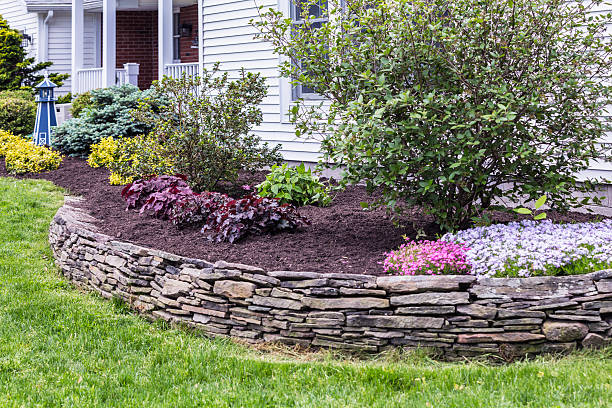
5. Coffee Grounds: Turning Your Morning Ritual into Gardening Gold
Now, let’s delve into a hack that combines two of life’s greatest pleasures: coffee and gardening. If you’re a coffee lover, this one’s especially for you. Each morning, as you enjoy your invigorating cup of java, you also create a potential source of nourishment for your garden: coffee grounds. These often-discarded remnants of your morning brew are, in fact, nutrient-rich treasures that can give your plants a serious boost.
Coffee grounds are high in nitrogen, a nutrient that plays a crucial role in plant growth. It’s a key component of amino acids and proteins, helps with cellular function and energy transformation, and is essential in creating chlorophyll, which gives plants their vibrant green color. When you mix coffee grounds into your soil or compost pile, you’re providing your plants with a nitrogen-packed feast that helps them grow stronger and greener.
Putting coffee grounds to work in your garden is as easy as brewing your morning cup. Once you’ve enjoyed your coffee, collect the grounds, allow them to cool, and then simply sprinkle them around your plants or mix them into your compost pile. Over time, as they decompose, they release nitrogen and other beneficial nutrients into the soil.
But the perks of coffee grounds don’t stop at nourishment. Coffee grounds, like eggshells and Epsom salt, can be an effective pest deterrent. Pests like slugs and snails are not fans of caffeine or the abrasive texture of coffee grounds. Spreading a barrier of coffee grounds around your plants can help keep these critters at bay, protecting your garden from unwanted munching.
Furthermore, coffee grounds can help improve soil structure. They add organic matter to the soil, enhancing its drainage, water retention, and aeration. They can also help attract beneficial earthworms, contributing to soil health and fertility.
So, next time you finish your cup of coffee, don’t just toss those grounds into the trash. Give them a second life in your garden, where they can work their magic. Not only will you be providing a nutritious treat for your plants, but you’ll also be reducing waste and contributing to a more sustainable gardening practice. Enjoy your coffee, and happy gardening!
6. DIY Greenhouse: Give Your Seedlings a Head Start
Starting a garden from seeds is an exhilarating experience that allows you to witness the miracle of life right from the beginning. However, it can also be challenging, particularly in colder climates where conditions may not be optimal for fragile seedlings. But worry not because you can craft a simple, effective solution right at home with a little creativity. Let’s dive into a fantastic DIY greenhouse hack that will help your baby plants get off to a flying start.
Picture this: a miniature greenhouse that’s easy to make, cost-effective, and perfect for nurturing your seeds. And the best part? You can create it with a common household item – a clear plastic container, like a soda bottle. This little structure can create a controlled environment that retains heat and humidity, providing the perfect conditions for your seedlings to grow.
Creating your own DIY greenhouse is a piece of cake. Start by cutting your chosen plastic container in half. Be sure to choose a clear container, allowing sunlight to penetrate while trapping warmth inside. You can use a pair of scissors or a utility knife but always prioritize safety when handling sharp objects.
Once your container is halved, the bottom part will act as your planting pot. Fill it with quality potting soil and plant your seeds according to the instructions on the seed packet. Then, put the top half back on to complete your greenhouse. Remember to leave the cap off or make some holes in the plastic for ventilation – your seedlings need to breathe too!
With your mini greenhouse set up, place it in a sunny spot and watch your seedlings flourish. The plastic container will trap the sun’s warmth, creating a cozy, humid environment akin to a tropical paradise – perfect for seed germination and early growth. The clear plastic also allows you to monitor your seedlings’ progress without disturbing them.
This simple DIY greenhouse hack is a fantastic way to give your seeds a strong start and an excellent reuse of plastic containers, contributing to less waste and a more sustainable lifestyle. It’s a fun, rewarding project that can involve the whole family, and the joy of seeing those first green shoots emerge is simply priceless. So why wait? Grab a plastic container and your favorite seeds, and let’s get growing!
7. Self-Watering Wine Bottle: A Toast to Happy, Hydrated Plants
Water is life, especially in the realm of gardening. But, between juggling work, family, and social commitments, or when we take some well-deserved time off for a vacation, keeping our green companions adequately hydrated can be quite a challenge. Fear not, for I have a neat trick up my sleeve that will ensure your plants never go thirsty. Let’s raise a toast to this hack – the self-watering wine bottle!
This ingenious hack is as simple as it sounds. It’s a DIY watering system that hydrates your plants by gradually releasing water into the soil. It’s a perfect solution for busy gardeners or those with a travel bug. Plus, it’s a fabulous way to repurpose an empty wine bottle, adding a dash of charm to your garden while promoting sustainability.
Creating your own self-watering system is a breeze. Start by finding an empty wine bottle – the bigger, the better, as it can hold more water. Give it a good clean, making sure to remove any residues. Once cleaned, fill it up with water. It’s now ready to take on its new role as your plant’s personal hydration assistant.
The next step is to create a spot for your wine bottle in your garden or pot. Dig a hole next to your plant, ensuring it’s deep enough to fit about half of the bottle. The goal is to have the neck of the bottle deep enough to reach the plant’s root zone but also to have it stable so it doesn’t topple over.
Now comes the fun part. Turn your water-filled bottle upside down and firmly stick it into the prepared hole. And just like that, you’ve set up an automatic watering system. The soil around the bottle’s neck will absorb water as needed, ensuring a steady moisture supply for your plant. The water absorption rate will naturally slow down when the soil is wet, preventing overwatering.
This wine bottle watering hack not only ensures your plants stay hydrated when you’re busy or away but also helps conserve water by reducing runoff and evaporation. It’s a win-win for your plants and the environment!
So, next time life gets a little hectic, or you’re packing for that exciting vacation, don’t fret about your garden. With your trusty self-watering wine bottles in place, you can be confident that your plants will be happily hydrated while you’re away. Cheers to that!
8. Newspaper Weed Barrier: The Green Thumb’s Secret Weapon Against Weeds
Every gardener has one common enemy: weeds. These unwelcome guests steal precious nutrients and water from your plants and create an unsightly mess in your otherwise gorgeous garden. However, what if I told you that the solution to this perennial problem might be sitting in your recycling bin right now? Enter the newspaper weed barrier – a simple, effective, and eco-friendly garden hack to keep those pesky weeds at bay.
You might be thinking, “Newspapers? In my garden?” Well, it might sound surprising, but this humble household item can actually serve as a fantastic biodegradable weed barrier. Newspapers are typically made from organic materials and are safe to use in the garden. When layered over your garden bed and covered with mulch or compost, they can effectively prevent weeds from breaking through the soil surface. It’s like drawing a line in the sand (or, in this case, the soil) and telling the weeds, “You shall not pass!”

Setting up a newspaper weed barrier is as easy as Sunday morning. Start by gathering a few sheets of newspaper. If you’re an avid reader, you already have a stack ready to go. If not, check your local recycling center or ask a neighbor. Next, lay down a few layers of newspaper over the areas of your garden where you want to prevent weed growth. Be sure to overlap the edges to create a solid barrier.
Once your newspaper barrier is in place, cover it with a layer of mulch or compost. This helps to hold the newspapers in place, adds an extra layer of weed suppression, and enhances the aesthetics of your garden. Plus, as the mulch or compost breaks down over time, it will help speed up the newspaper’s decomposition, adding even more organic matter to your soil.
This newspaper hack saves you the back-breaking work of pulling weeds and contributes to a more sustainable gardening practice. Over time, the newspaper decomposes, enriching your soil with organic matter and improving its texture and fertility. It’s a win-win situation for both you and your garden.
So, the next time you find yourself in a battle against weeds, remember this newspaper weed barrier hack. With just a few sheets of newspaper and some mulch or compost, you can wave goodbye to your weed worries and say hello to a cleaner, more manageable garden. It’s one of the best garden hacks proving recycling isn’t just good for the environment – it’s also great for your garden!
9. Vertical Gardening: Sky-High Greenery for Space-Savvy Gardeners
Last on our list, but by no means least, is a garden hack that will literally take your gardening to new heights: vertical gardening. Going vertical can be a total game-changer if you’re a city dweller with limited outdoor space or simply want to add an extra dimension to your garden. It’s a clever way to grow more in less space, offering a unique blend of practicality and visual appeal.
Vertical gardening involves growing plants on a vertically suspended panel, such as walls, trellises, or specially designed structures. It allows you to transform any vertical surface into a lush, green garden, elevating your gardening game (quite literally!). But don’t worry; you don’t need a fancy structure to start vertical gardening. With a bit of creativity, you can repurpose everyday items into functional, attractive vertical planters.
You can use old pallets, ladders, or over-the-door shoe organizers to create your vertical garden. These items offer pockets or shelves that can hold soil and plants, and they’re usually easy to hang or prop up against a wall or fence. Once you’ve chosen your vertical structure, fill each pocket or shelf with potting soil and your favorite herbs, flowers, or even small veggies like lettuce or radishes.
One of the beauties of vertical gardening is its versatility. You can create a culinary masterpiece by planting your favorite herbs or designing a stunning vertical flower bed that adds a splash of color to your garden. You can even mix and match different plants to create your own unique, living work of art!
Not only does vertical gardening maximize space, but it also makes harvesting and maintenance easier. No more bending or crouching to reach your plants – everything is at a comfortable height for tending and harvesting. Plus, many pests and diseases that affect plants are soil-borne, so keeping your plants off the ground can help to reduce these problems.
Vertical gardening is a step up in the gardening world that literally turns the traditional horizontal landscape on its side! It’s a testament to the creativity and innovation that gardening can inspire, showing us that the sky really is the limit when it comes to growing your own slice of paradise. So why not try vertical gardening and watch your garden reach new heights?
FAQs: Digging Deeper
You’ve made it this far, so as promised, let’s delve into some frequently asked questions about gardening hacks.
1. Are these garden hacks safe for all plants?
While these garden hacks can provide universal benefits to many gardens, it’s important to remember that not all plants are the same.
Plants have different needs and preferences regarding soil pH, watering, and nutrients. As such, what works wonders for one type of plant might not be ideal for another.
For example, coffee grounds can be a fantastic source of nitrogen and can help make the soil more acidic. This makes them a great addition to your garden if you’re growing acid-loving plants like azaleas, rhododendrons, or blueberries.
However, adding coffee grounds could be more harmful than helpful if you have plants that prefer alkaline soil, such as lavender or clematis.
This is why it’s always a good idea to research the specific needs and preferences of each plant in your garden before trying out a new garden hack. Tailoring your approach to each plant can help ensure that they thrive and that you get the most out of these creative gardening tips and tricks.
2. How often should I use Epsom salt in my garden?
Epsom salt is a potent gardening tool that can benefit your plants, from enhanced flower blooming to boosted green color. As a general rule of thumb, you can use Epsom salt in your garden every two weeks to help keep your plants vibrant and healthy.
However, it’s essential to remember that moderation is key, as with any gardening supplement. While Epsom salt can work wonders in your garden, using too much can lead to a buildup of salts in your soil over time, which can, ironically, be detrimental to your plant’s health.
To prevent overuse, try dissolving one or two tablespoons of Epsom salt in a gallon of water and using this solution to water your plants every other week. You can also sprinkle a small handful of Epsom salt around the base of your plants every month or so.
By using Epsom salt judiciously, you can reap the maximum benefits without risking harm to your precious plants. Just remember always to keep an eye on your plants and adjust your gardening practices as needed based on their response.
3. Can I use colored newspaper for the weed blocker?
Yes, indeed! Colored newspaper is safe to use as a weed blocker and can also add a fun and quirky aesthetic to your garden.
Modern newspapers, whether colored or black and white, use soy-based inks. These inks are non-toxic and biodegradable, making them safe for your garden and the environment.
Soy-based inks break down into basic organic materials over time, so they won’t pollute your soil or harm your plants. In fact, as the newspaper decomposes, it can help improve the quality of your soil by adding organic matter to it.
So go ahead and layer that colored newspaper over your garden beds. Not only will it help suppress those stubborn weeds, but it’ll also give your garden a unique look and improve your soil health over time.
Remember to cover the newspaper with mulch or compost afterward. This helps keep the newspaper in place and hastens its decomposition, which enriches your soil even faster. Just another fantastic way that garden hacks can turn everyday items into helpful gardening tools!
4. Do self-watering wine bottles work for all plants?
The self-watering wine bottle trick is an ingenious hack that can keep your plants well-hydrated, particularly if you’re away for a few days or simply too busy to water daily. However, it’s crucial to note that while this hack can benefit some plants, there may be better fits for some.
This method is particularly effective for plants that thrive on a steady water supply, such as most vegetable plants, certain flowering plants, and various houseplants. The slow release of water from the bottle ensures that these moisture-loving plants receive a consistent and adequate amount of water over a prolonged period.
On the other hand, plants that prefer drier soil or are prone to root rot, such as succulents, cacti, and some types of orchids, might not benefit from this hack. These plants require their soil to dry out completely between watering, and the constant supply of water from the wine bottle could keep the soil too damp and lead to overwatering.
Therefore, it’s important to understand the watering needs of your individual plants before implementing this hack. The self-watering wine bottle is a clever solution, but like all gardening strategies, it should be tailored to suit the needs of your specific plants for the best results.
9 Best Garden Hacks – The Final Dig
In the grand scheme of things, little secrets often make the biggest difference in our gardens. Today, we’ve walked you through nine remarkable garden hacks that are easy to implement but profoundly impact your garden’s health and appearance.
We started off with the powerful benefits of Epsom salt, followed by the transformative power of eggshells and coffee grounds in enriching your soil. We then unveiled the power of companion planting and the protective benefits of mulching. The DIY mini greenhouse and self-watering wine bottle have shown us that resourcefulness can go a long way in gardening. We learned how to keep those pesky weeds at bay using only some layers of newspaper, and lastly, we touched on the creative and space-saving wonder of vertical gardening.
Each of these hacks revolves around simplicity and efficiency, proving that you don’t need expensive equipment or a degree in horticulture to cultivate a flourishing garden. It’s about working smarter, not harder, and making the most of what you have on hand.
Our gardens are an extension of ourselves, a reflection of our care, and a testament to our resilience. Every plant you nurture, every seed you sow, every bloom you cherish is a piece of the love you pour into your garden. And as you employ these garden hacks, you’re not just growing plants; you’re growing joy, peace, and satisfaction.
So, as we wrap up our journey through these nine best garden hacks, remember this: In the gardening world, there are no mistakes, just experiments. It’s a journey of continuous learning and boundless creativity. Keep your hands in the dirt, your heart in the flowers, and let these unearthed secrets guide your way to a garden that is as vibrant and as lively as you are. Happy gardening, my friends!

Hi there, I’m Mark Apletree, a gardening enthusiast with a passion for gardening, and gardening tools. I’ll be your go-to guide for all things related to gardening. The purpose of this website is to assist you in selecting the most suitable garden gear that meets your specific requirements.
See All Posts